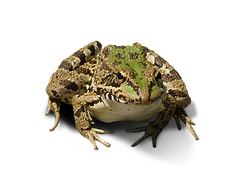 Everyone can’t have a career in science, but nothing prevents you from taking part in various projects and contributing to important research. Thanks to technology, being a citizen scientist couldn’t be easier.
Everyone can’t have a career in science, but nothing prevents you from taking part in various projects and contributing to important research. Thanks to technology, being a citizen scientist couldn’t be easier.
Citizen science, also known as crowd science, crowd-sourced science, civic science, volunteer monitoring or networked science, is scientific research conducted,  by amateur or nonprofessional scientists. (www.wikipedia.org)
Joseph M. Hulbert elaborates further in his article, Citizen science tools available for ecological research in South Africa:
“Ordinary citizens can participate in¬†research from their home computer, in their own gardens, or in the great outdoors ‚Äď without any expertise in the¬†field. Many citizen science projects and opportunities exist in South Africa ‚Äď ranging from monitoring bird migrations¬†to identifying and mapping distributions of fungi.”¬†
One of the most popular fields where citizen science is practised is amateur astrology, but others include butterfly counts, ornithology, citizen oceanography and even art history. In South Africa CS projects include the Stream Assessment Scoring System (miniSASS) and at the University of Pretoria members of the public are helping researchers to identify Phytophthora (“plant destroyers”) species present in the fynbos. The main purpose of the research is to survey plant disease in the Fynbos Biome. By finding the locations where the disease is spotted, faster action can be taken and the conservation of Fynbos will be benefitted. Read more about the project here.
The University of Cape Town’s¬†Animal Demography Unit (ADU) is responsible for many local citizen science projects. The unit has created various Virtual Museums, including the MammalMAP website where you can submit photos and add to a growing database of the habits and distribution of mammals in South Africa. If you’re not into mammals, there are virtual museums for anything from frogs and butterflies to starfish and sea urchins.¬†
Joseph M. Hulbert mentions two other local projects, OrchidMap and Aliens of the Cape Peninsula. OrchidMap is also one of the projects hosted by Virtual Museum and consists of nearly 3000 geo-referenced records for orchids being added since September 2014. Members of the public can upload images and locations of orchids on the database. Aliens of the Cape Peninsula attempts to locate new alien plants and their distribution on the Cape Peninsula.
If you are interested in being a citizen scientist and putting your photography and science skills to good use, here are a few tools you can use –¬†
Ispot is a South African National Biodiversity Institute (SANBI) initiative. Since its launch in June 2012, it has contributed to the nearly 400 000 international observations of 30 000 different species reported by mid-2014.
WhatSpecies¬†was started by a parent¬†who wanted to help her¬†children identify insects and plants. Subsequently, the website’s layout is friendly and accessible for a younger audience and it tries to engage youth on various social media platforms.
Virtual Museum, as mentioned earlier, is hosted by the Animal Demography Unit at the University of Cape Town. There are 17 different projects that citizens can participate in hosted on Virtual Museum alone.
The Cape Town Citizen website¬†¬†also contains ample information on becoming a citizen scientist. Also watch the SciShow’s video on Citizen Science on YouTube.

